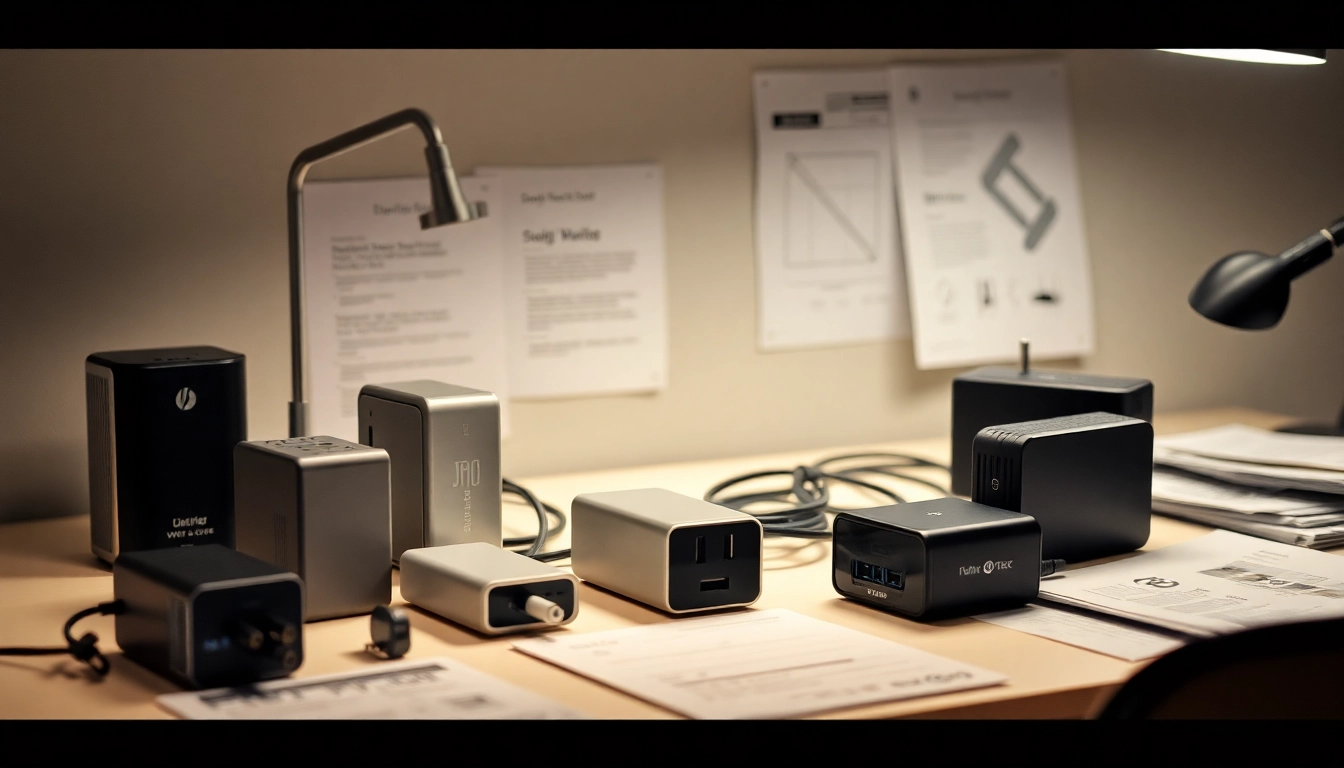The Importance of Rapid Charging
As technology continues to evolve, our dependence on digital devices has never been greater. From smartphones to laptops, the need for quick power solutions is essential in our fast-paced lives. This necessity brings us to the forefront of charging technology, particularly rapid charging, a method that provides efficiency and convenience to users. As we delve into this technology, we will explore its significance, benefits, and implications in today’s world.
Understanding Rapid Charging Technologies
Rapid charging technology refers to various methods that expedite the charging process of electronic devices, allowing them to gain significant battery life in a fraction of the usual time. Various technologies contribute to rapid charging, including:
- Fast Charging: Utilizing higher voltages and currents, fast charging works with compatible devices to reduce charging time drastically.
- USB Power Delivery (USB PD): This standard allows devices to negotiate power requirements up to 100 watts, enabling quicker charging while maintaining safety.
- Qualcomm Quick Charge: This proprietary technology increases the voltage levels of the charging process, thus allowing for faster energy transfer.
- Wireless Rapid Charging: Using electromagnetic fields, wireless chargers can deliver faster energy transfer rates compared to traditional wireless charging methods.
These technologies not only promise a quicker charge but also promise compatibility across different devices and efficient energy management. Understanding the underlying technologies is essential for users looking to leverage rapid charging to its fullest potential.
Benefits of Rapid Charging
As rapid charging rapidly gains popularity, the advantages it offers cannot be understated:
- Time Efficiency: The most apparent benefit is the reduction in charging time, enabling users to quickly recharge their devices during short breaks or while commuting.
- Increased Device Lifespan: With the right technology, rapid charging can contribute to overall battery health by adapting the current flow, ensuring longevity.
- Convenience: Rapid charging devices often facilitate simultaneous charging of multiple gadgets, enhancing user convenience.
- Boosting Productivity: For professionals and students, rapid charging translates to fewer interruptions and more time spent being productive rather than waiting for devices to charge.
Comparison with Traditional Charging Methods
In juxtaposition to traditional charging methods, rapid charging presents several advantages that significantly improve user experience. Traditional chargers typically deliver power at a standard rate, often resulting in longer waiting times. Below, we summarize the key differences:
| Aspect | Traditional Charging | Rapid Charging |
|---|---|---|
| Charging Time | Hours | Minutes |
| Power Output | Standard Voltage | Variable Voltage |
| Device Compatibility | Limited | Wide Range |
| Usability | Single Device | Multiple Devices |
This comparison highlights that rapid charging stands out as a highly efficient solution in our current technological landscape.
Key Features of Rapid Charging Devices
Compatibility with Various Devices
One of the primary appeals of rapid charging is its versatility. These devices often support a wide range of electronics, from smartphones to tablets to electric vehicles. Innovative charging technologies ensure that power algorithms can adjust to the requirements of the devices connected. This phase of charging allows for more seamless transitions between different devices without the hassle of switching chargers.
Safety Features in Rapid Charging
While speed is a major benefit of rapid charging, safety remains a paramount concern. Modern rapid charging solutions are engineered with advanced safety features to prevent potential hazards. Key safety elements include:
- Overvoltage Protection: Prevents excess voltage from damaging the device.
- Temperature Control: Monitors and regulates device temperature during charging to prevent overheating.
- Short Circuit Protection: Detects and mitigates short circuit risks.
- Smart Charging Technology: Adjusts current and voltage based on the device’s battery state to avoid overcharging.
Design Elements that Enhance Usability
Beyond performance specifications, the design of rapid charging devices significantly contributes to user experience. Considerations include:
- Compact Size: Portable chargers make it easy for users to carry them on the go.
- Multi-port Options: Allow users to charge several devices simultaneously, reducing clutter.
- Smart Indicators: LED indicators offer insight into charging status, ensuring that users are informed.
- Cable Management: Features that prevent tangling and make for easier storage enhance overall usability.
How to Choose the Right Rapid Charging Solution
Assessing Your Power Needs
Identifying your specific power needs is crucial when selecting a rapid charging solution. Factors to consider include:
- Device Types: Different devices have varying power requirements; assess compatibility before making a purchase.
- Frequency of Use: If you’re frequently on the go, portable, high-output chargers may be invaluable.
- Charging Locations: Consider whether the charger will mainly be used at home, work, or while traveling.
Evaluating Speed vs. Safety
While rapid charging offers speed, the relationship between speed and product safety must be closely examined. Rapid charging technology may generate more heat; therefore, it is essential to look for products that incorporate safety features without compromising on efficiency. Opt for solutions that meet recognized safety certifications for consumer electronics.
Considerations for Different Environments
Your environment can influence your charging needs significantly. For instance:
- Home Settings: A versatile charging station with multiple ports may work best.
- Work Environment: Consider chargers with a clean and efficient design that fits seamlessly into office settings.
- Travel: Lightweight, portable solutions are ideal for business trips or vacations.
Implementation Tips for Rapid Charging
Setting Up Your Charging Station
To get the most out of rapid charging, creating an efficient charging station at home or work is vital. Start with a designated area for charging, ensuring it’s easily accessible. Use power strips that cater to multiple devices and have built-in surge protection to safeguard your gadgets. Label cords and chargers for clarity, and manage cables to minimize clutter.
Maximizing Device Lifespan with Smart Usage
Smart usage strategies can extend the lifespan of your devices, even when using rapid charging technology. Here are some practical tips:
- Charge devices only when necessary, avoiding constant charging cycles that can degrade battery health.
- Use the original charging cables and adaptors whenever possible, as they are designed for optimal performance.
- Store devices in a cool, dry place to avoid heat buildup during the charging process.
Integrating Rapid Charging into Your Routine
Incorporating rapid charging into your daily routine can lead to greater efficiency. For example, charge devices in the morning before work or during lunch breaks to maximize productivity. Familiarize yourself with your devices’ battery life, and plan charging sessions accordingly to keep them fully operational without unnecessary downtime.
Future Trends in Rapid Charging Technology
Innovations on the Horizon
The future of rapid charging holds promising innovations. Researchers and developers are actively exploring wireless power transfer technologies that would allow devices to charge without physical connections. Advancements in lithium-silicon batteries could also yield higher energy densities, making rapid charging even more effective.
Potential Environmental Impact
Sustainable charging technologies are becoming increasingly important as global energy consumption rises. Rapid charging solutions that rely on renewable energy sources can positively impact environmental sustainability. Moreover, developments in recycling old batteries and sustainable materials are also paving the way for greener technology options.
Growing Adoption in Various Industries
As rapid charging technology becomes more mainstream, its adoption across various industries is projected to rise. Sectors like automotive are integrating rapid charging for electric vehicles, while consumer electronics continue to innovate with faster charging capabilities. Companies are likely to invest in rapid charging solutions as competitive advantages, driving further advancements in this space.



